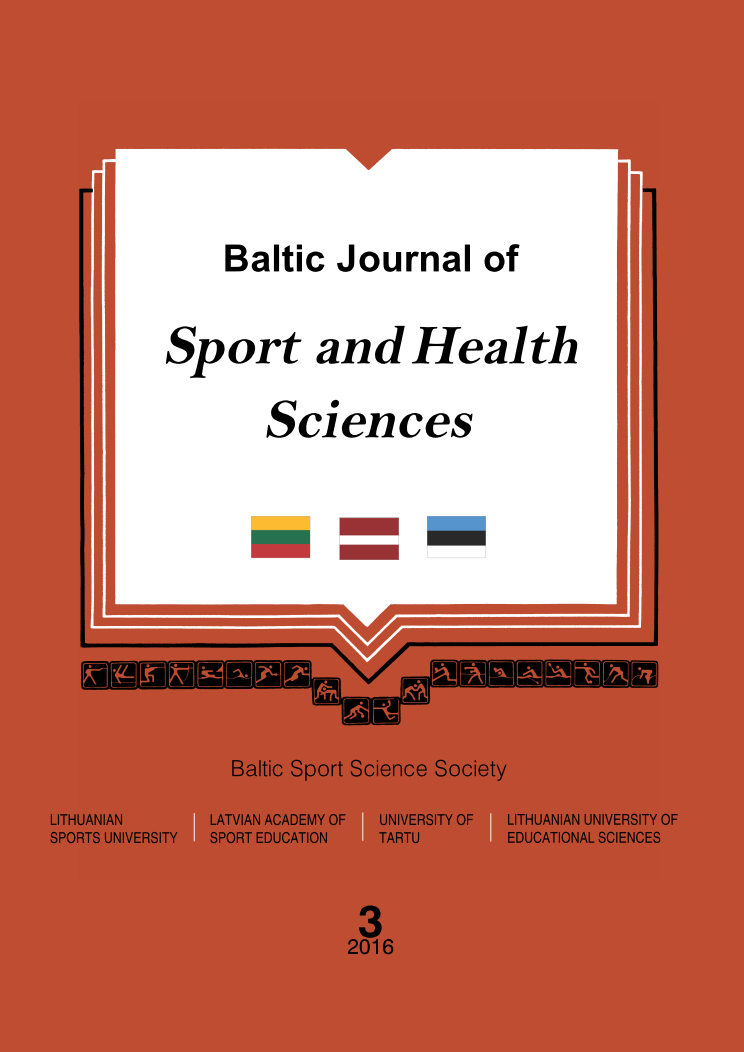Effect of Body Position during Whole Body Vibration on Acute Jumping Performance
Abstract
Background. The aim of the study was to investigate the acute effect of whole-body vibration (WBV) during
heel raised and standing squat position on squat (SJ) and countermovement jump (CMJ) heights.
Methods. Twenty four physically active sport science students are voluntarily participated in this study.
Randomized, counterbalanced, crossover study was used in this study and all subjects completed two trials that
were plantar (25–30°) and dorsal (5–10°) flexion squats. WBV exercises were performed on a vibration plate at
26 Hz frequency, 4mm amplitude. Jumping performances were assessed with and without WBV conditions. Subjects
executed WBV condition treatment on static plantar or dorsal flexion half squat position (45 °knee angle) for 3x60 s
with 60 s rest between sets.
Results. There was no statistically significant two-way interaction between treatments and times for SJ and CMJ
(p > .05). SJ and CMJ after the WBV were significantly higher than without WBV condition (p < .05). SJ and CMJ
heights were higher than baseline values without WBV.
Conclusion. These results indicate that there were no differences between WBV during plantar and dorsal
flexion squat position on SJ and CMJ heights. Regardless of different muscle length squat position during WBV,
there were little but significant differences (~1cm) on SJ and CMJ heights after WBV. According to these results it
can be said that WBV had a statistically significant acute effect on jumping, but different plantar-flexor muscle length
squat position on vibration plate during WBV did not have any effect on jumping performance.
Keywords: whole body vibration, acute effect, body position, jump performance
Downloads
Published
Issue
Section
License
Copyright (c) 2018 Baltic Journal of Sport and Health Sciences

This work is licensed under a Creative Commons Attribution 4.0 International License.






